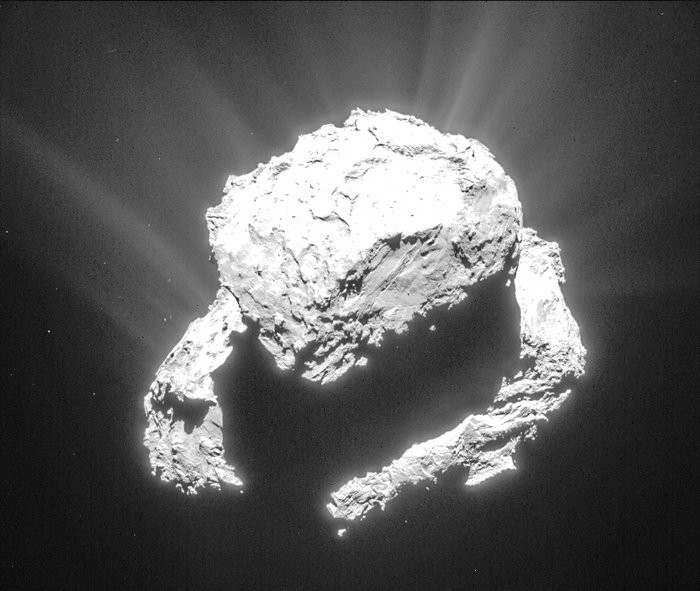ESA's Philae lander could provide first close peek into evaporating comet

Comet lander Philae's rise from slumber after seven months could provide incredible, first time observations as a comet approaches the closest point to the sun.
System engineer Laurence O'Rourke says that a revived Philae can continue with experiments up to the comet's closest approach to the sun in mid-August -- called perihelion.
When comets get close to the Sun, they get activated by the Sun's heat and frozen gases, on and below the surface, sublimate passing directly to the gaseous state.
This gas drags small dust grains with it and creates the coma and the comet's dust tail. Philae has the advantage of watching this action from close quarters but could also be affected by the dramatic changes.
The Rosetta orbiter has been recording pictures of this activity now for weeks.
O'Rourke is confident Philae will survive and continue collecting more data from the surface.
"I think we know that Philae is in a quiet location. I'm reasonably sure it's going to survive perihelion," he told CNN.
Philae may be able to operate for up to four months say scientists.
The Philae lander tweeted back home on 14 June with the European Space Agency making contact with the lost lander for 85 seconds.
More than 300 data packets have been analysed by the teams at the Lander Control Center at the German Aerospace Center (DLR) with 8,000 more expected to be transmitted during the next contact.
Some of the 'historical' data received indicates the lander was functioning before the latest contact was made.
Hitching a ride on Comet 67P/Churyumov-Gerasimenko, the Philae lander has been silent since 15 November 2014 after returning data for about 60 hours.
The lander operated on primary battery power for the period. In the second phase that was to last up to three months, observations were to be conducted using backup batteries recharged by the sun.
ESA had expected that by March 2015 when the comet is close to the Sun, the lander would become too hot to operate.
The communication unit on orbiter Rosetta was turned on to listen out for the lander from early March this year.
The lander was designed to provide a nucleus-based cross-check for some of the orbiter's remote measurements. Philae has the ability to drill down for samples from below the surface and analyse their mechanical properties on the spot.
Philae's Multi-Purpose Sensors for Surface and Subsurface Science instrument package (MUPUS), had on landing returned evidence of carbon in the comet's environment. The instrument can be activated again, believe the team.
The lander's camera system, especially the micro cameras, is capable of imaging the region at a higher resolution than the high-resolution camera on-board the orbiter, says ESA.
There is a proposal to extend the Rosetta mission to September next year when an attempt will be made to park the craft on the comet surface.
Unlike Philae, Rosetta can avoid bouncy landings thanks to many thruster rockets that can help reduce its speed and attitude.
Comet 67P/Churyumov-Gerasimenko orbits the Sun once every 6.6 years. It remains to be seen if Rosetta will live that long to tell the story of a round trip around the Sun.
© Copyright IBTimes 2025. All rights reserved.





















